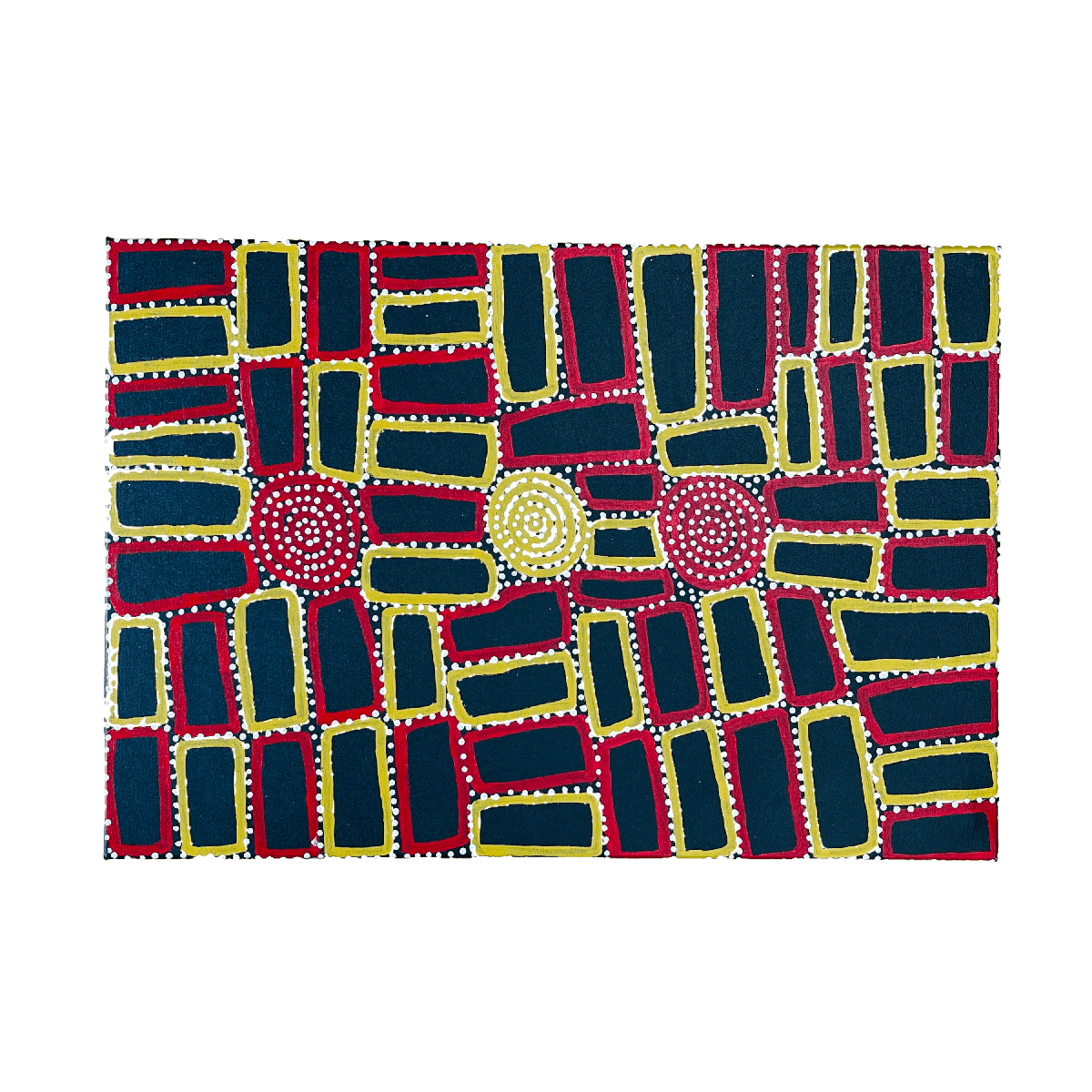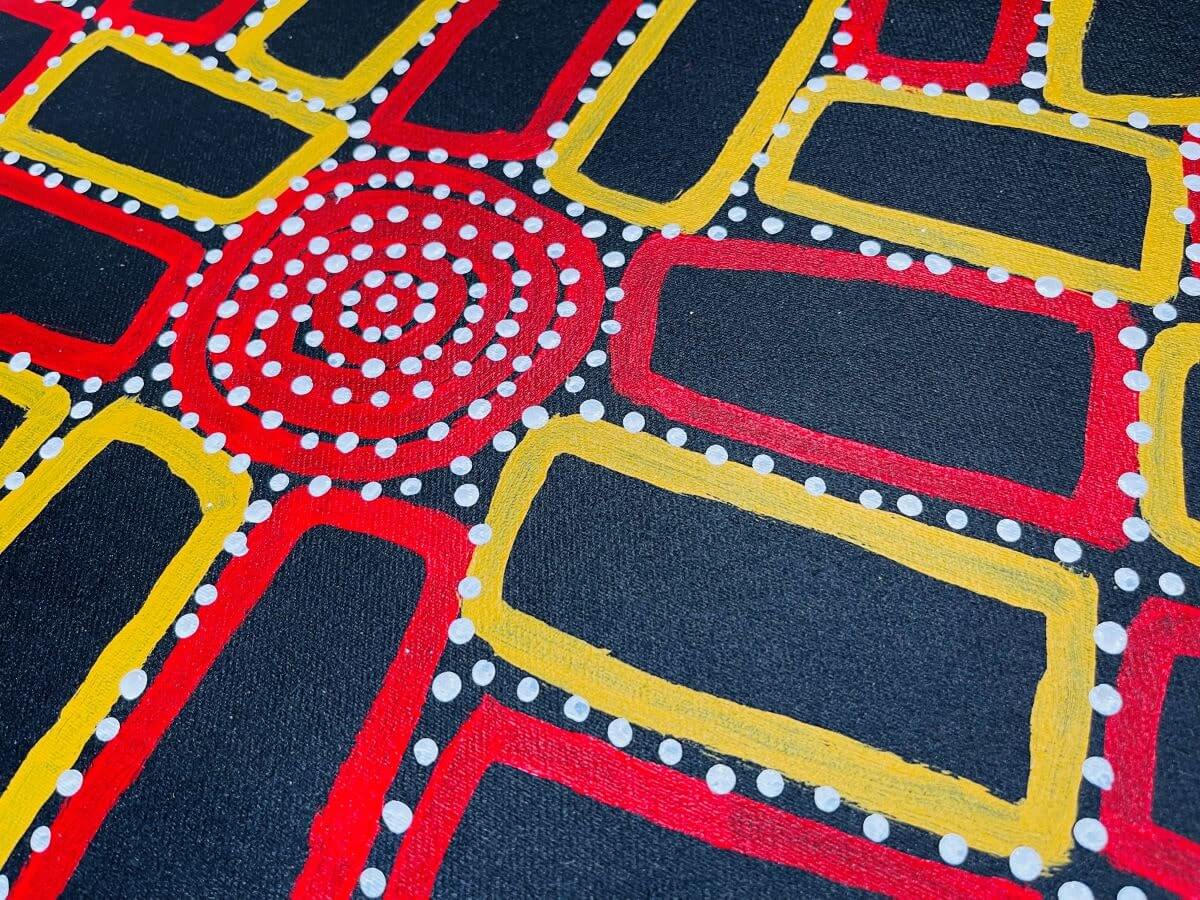Description
Ready to Hang, Certificate of Authenticity Included
Biography:
It was in 1984 when Walala and several other members of the Pintupi Tribe walked out of the remote wilderness of the Gibson Desert in Western Australia and made contact for the first time with European society. Described as 'The Lost Tribe', he and his family created international headlines. Until that day in 1984, Walala and his family lived the traditional and nomadic life of a hunter-gatherer society. Their intim ate knowledge of the land, its flora and fauna and waterholes allowed them to survive, as their ancestors had for thousands of years.
Since he began painting in 1997, Walala Tjapaltjarri has gained worldwide recognition, participating in several national and international solo and group exhibitions. His paintings are represented in private and public collections in Australia, Europe and the U.S.A. Walala Tjapaltjarri was first introduced to painting by his brother Warlimpirrnga, also a painter of international acclaim. While Walala's first paintings were in a classical Tingari style usually reserved for body painting, ground painting and the decoration of traditional artifacts, within a couple of months of painting he evolved his own innovative style of work. He began abstracting the classical Pintupi designs, creating a highly graphic language to speak of his country and ceremonial sites. The rectangles so prominent in his paintings form both a physical and spiritual map establishing him as a discerning draughtsman for his ancient country. He paints the Tingari Cycle (a series of sacred and secret mythological song cycles) which are associated with the




